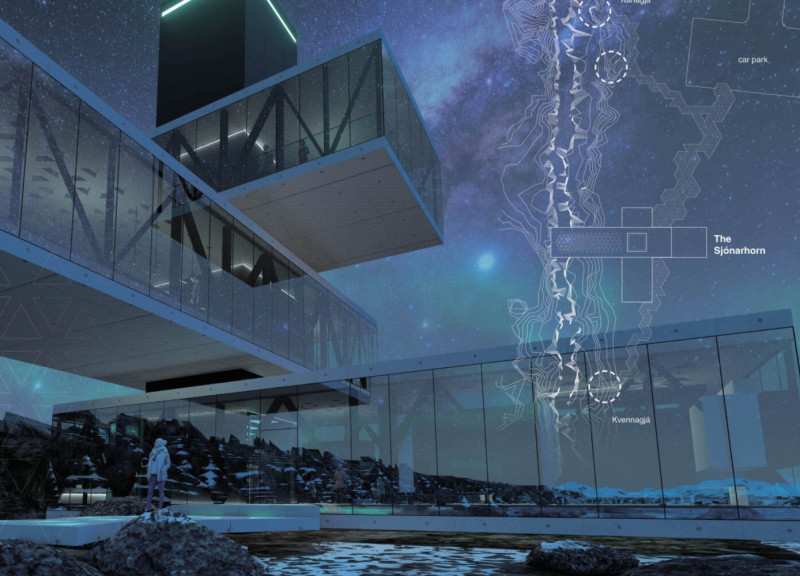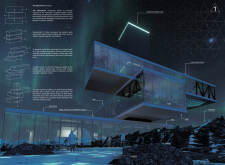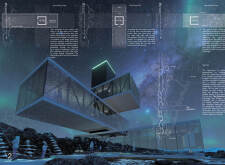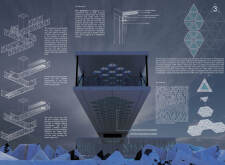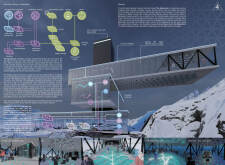5 key facts about this project
The Sjónarhorn, or Viewpoint, is located near Lake Mývatn in northern Iceland and reflects the natural movements of tectonic plates. It draws inspiration from the local geology, particularly the nearby Grjótagjá caves. The structure operates as a visitor attraction, connecting people to the geological features of the area. The design concept highlights the relationship between architecture and the Earth’s physical movements, creating an engaging experience for visitors.
Form and Spatial Organization
The design features three cantilevered masses that slide past one another, mimicking the complex interactions of tectonic plates. This arrangement creates an observation point that allows visitors to take in the surrounding landscape from a unique height. A central monolithic core serves as the backbone of the structure, providing stability while allowing the masses to appear to float. This effect illustrates the balance between permanence and movement in geological processes.
Functional Spaces
Inside, Sjónarhorn includes a variety of functional areas such as a plant room, visitor entrance, exhibition spaces, a café, and offices. The observation deck is particularly important, offering broad views that showcase the geological formations of the region. The layout supports a flow that encourages visitors to explore, making them more aware of the geological context framed by the architecture.
Materiality and Aesthetic
The structure uses minimal materials, focusing on efficiency and coherence. The vertical core consists of steel columns and beams encased in concrete, which contain dark ash to achieve a finish that resembles volcanic rock. The roof and floor slabs feature a recessed triangular 'waffle' pattern that reduces material weight while ensuring strength. This design choice connects the architectural form with the natural characteristics of caves.
Sustainability Measures
Sjónarhorn incorporates sustainability practices, targeting net-zero carbon emissions. The energy system combines geothermal power with the national grid. Features such as efficient water distribution and underfloor heating improve energy use. The architecture collects rainwater and snowmelt for drinking water, reflecting a commitment to environmental stewardship.
The walkway, made of triangular prefabricated elements, invites exploration while minimizing impact on the ground. It enhances the visitor experience and allows for a direct connection with the natural environment, rounding out the thoughtful design of Sjónarhorn.


